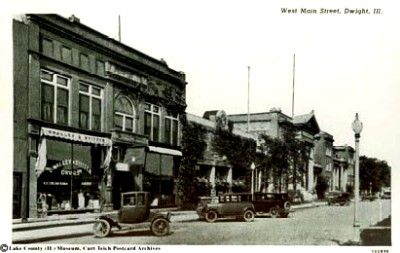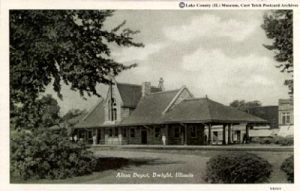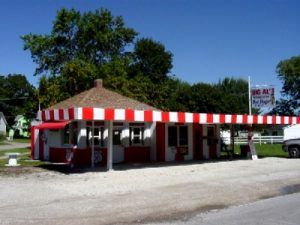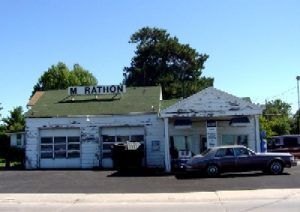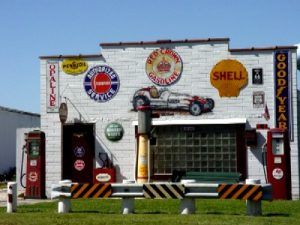Dwight, Illinois, is a pretty little town of some 4,500 residents whose motto is “Not Just A Bump in the Road,” which you’ll find to be true if you take the time to stop and explore this old Route 66 town.
It all began in the early 1850s when two railroad surveyors named James Spencer and T.C. Myer camped near what would soon be the town of Dwight. Within a few years, the railroad was built, and when the first Alton and Sangamon (later the Chicago and Alton) train came through from Chicago to St. Louis, Missouri, in 1854, there were just two small wooden buildings and a water tank. They called the “station” West New York. However, when Richard P. Morgan, another survey engineer, was asked to name the place, he suggested Henry Dwight of New York, who had invested a fortune into the railroad building. And so it was.
Railroad stops often became towns at this time, and Dwight was no different. Morgan built the first mill in 1859 and donated the land for the Presbyterian Church. David McWilliams soon built a store that did a booming business during its first year. Later he would help to build the first school in town and started the town’s first bank, now known as the Bank of Dwight.
In 1879 Dwight was still a quiet railroad town when young Dr. Leslie Keeley opened the doors of the Keeley Institute, the first medical institution to treat alcoholism as a disease. By the 1890s, Keeley Institutes were located in nearly every state in the nation and many overseas.
When Keeley died in 1900, his partner and friend, John R. Oughton, became president of the corporation. Oughton renovated a building that was used as the Keeley Club House and, adding to it, made it his home, which was known as “The Manse.” Today, the building operates as a restaurant with extensive banquet facilities called the Country Mansion.
The Keeley Institute continued to operate until 1966, when hospitals began to deal with the disease of alcoholism. Today the building houses the Fox Developmental Center.
When Route 66 barreled through town, it bypassed Dwight’s downtown district, so the town responded with new businesses along the highway.
Big Al’s Hot Dogs will be one of the first things you see as you enter Dwight on Route 66. Soon you will pass Ambler’s Texaco Station. Built in 1933, it became The Marathon Oil Station and serviced travelers until 1998. The community is restoring the building, and it will serve as a visitor’s center.
Further down the road, you will see another Route 66-era station decked out with all manner of gas station paraphernalia and Feddersen’s Pizza Garage. This old car dealership has been converted into a pizzeria.
Off Route 66, in downtown Dwight, there are several historical buildings that the town has taken care to preserve. The beautiful stone railroad depot, built in 1891, houses the Dwight Historical Society and the Chamber of Commerce. This building is on the National Register of Historic Places.
Also downtown is the First National Bank building, designed by Frank Lloyd Wright in 1905, and the former Keeley Institute, with its priceless stained glass windows depicting the five senses.
The Prairie Creek Public Library, housed in an old carriage house, The Country Mansion, the Pioneer Gothic Church, and the historic Windmill in the City Center are also on the National Register of Historic Places.
Your next stops on ole’ Route 66 are Odell and Pontiac, where you will see many more of the Mother Road era.
© Kathy Alexander/Legends of America, updated June 2023.
Also See:

